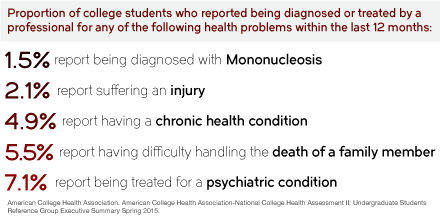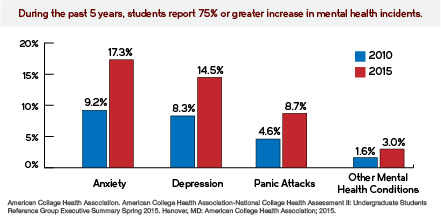![]()
Riverwoods, IL, September 13, 2016 – You have probably heard the term “credit score” in conversations or advertisements, but what exactly is a credit score? And more importantly, as a college student, why is it important to know your credit score? A FICO® Credit Score is a three-digit number that is calculated based on data from your credit report, such as the amount of money you owe to creditors, your payment history and length of credit history, and types of credit (i.e. revolving loans like a credit card and/or installment loans like a student loan). The higher your credit score, the more “credit worthy” you are in the eyes of lenders, and the more likely you are to qualify for better rates and terms for future loans. Your credit score can be a big factor during some of life’s big moments like renting your first apartment or purchasing a car. Because of this, it’s important to familiarize yourself with your credit score and, if you don’t yet have a credit score, to work toward establishing one.
You can now check your FICO® Credit Score for free by using Discover’s new Credit Scorecard1, even if you are not a Discover customer. Along with providing your FICO® Score—the credit score that 90 percent of top lenders use—Credit Scorecard includes a summary of some of the data that determines your FICO® Score.
In addition to monitoring your score, there are several actions you can do now that will serve you throughout your financial life. Here are three ways for people with limited or no credit history to get off on the right foot:
1. Check Your Credit Health
Just like you stay on top of your grades so there are no big surprises at the end of the term or semester, you should stay on top of your financial health. Your credit score is like a “grade” that’s used by lenders. The higher your score, the better off you’ll be when it comes time to lease a car or buy a home.
In fact, consumers who regularly check their credit score say doing so improves their credit behavior. A recent survey2 from Discover found that 73 percent of those who checked their credit score seven or more times in a year said that checking their score had a positive impact on their credit behavior, such as paying bills on time, paying down loans and maintaining low balances on their credit cards. You can check your FICO® Score for free at Discover.com/CreditScorecard to see if your credit score “grade” is up to par.
2. The Benefits of a Student Credit Card
As a student, you may not be ready for an auto loan or mortgage, but you may want to consider getting a credit card. By using a credit card responsibility, you can start to lay the groundwork for a healthy credit score.
Before applying for a credit card, make sure to do your research. Many credit card companies offer a student version of their popular cards. The Discover it® chrome for Students card offers the same great benefits as Discover’s non-student cards, such as flexible rewards and 100 percent U.S.-based customer service. Plus, you get your FICO® Credit Score for free on monthly statements and online3.
3. Pay Bills on Time
Your payment history typically makes up 35 percent of your FICO® Credit Score. In general, people who continually pay their bills on time and demonstrate a good payment history tend to appear less risky to lenders. To stay on top of your payments, you can look into automatic payment options or mark a time on your calendar each month to pay your bill. Make it part of your routine!
This is also where having a budget comes in. If you have a job, you can plan to put a certain amount of income aside to make sure that you are paying off your bills each month. The school year is filled with fun things like going out to dinner with friends and concerts; just make sure you set a budget and that you can cover all of the costs.
###
About Discover
Discover Financial Services (NYSE: DFS) is a direct banking and payment services company with one of the most recognized brands in U.S. financial services. Since its inception in 1986, the company has become one of the largest card issuers in the United States. The company issues the Discover card, America’s cash rewards pioneer, and offers private student loans, personal loans, home equity loans, checking and savings accounts and certificates of deposit through its direct banking business. It operates the Discover Network, with millions of merchant and cash access locations; PULSE, one of the nation’s leading ATM/debit networks; and Diners Club International, a global payments network with acceptance in more than 185 countries and territories. For more information, visit www.discover.com/company.
Media Contact:
Jeremy Borling
224-405-4252
jeremyborling@discover.com
@Discover_News
1 FICO® Credit Scores provided by Credit Scorecard are based on data from Experian and may be different from other credit scores. See Discover.com/CreditScorecard to learn more. FICO® is a registered trademark of the Fair Isaac Corporation in the United States and other countries.
2 The national survey of 2,000 consumers ages 18 and over was commissioned by Discover and conducted in March 2016 by Toluna, an independent survey research firm. The maximum margin of sampling error was ±5 percentage points with a 95 percent level of confidence. The results were based on consumers’ self-reported estimated credit scores. The survey was not based on FICO® Scores.
3 FICO® Credit Scores are disclosed on monthly statements and online and are based on data from TransUnion and may be different from other credit scores. Limitations apply to the FICO® Credit Score benefit. See Discover.com/FICO to learn more. FICO is a registered trademark of the Fair Isaac Corporation in the United States and other countries.




